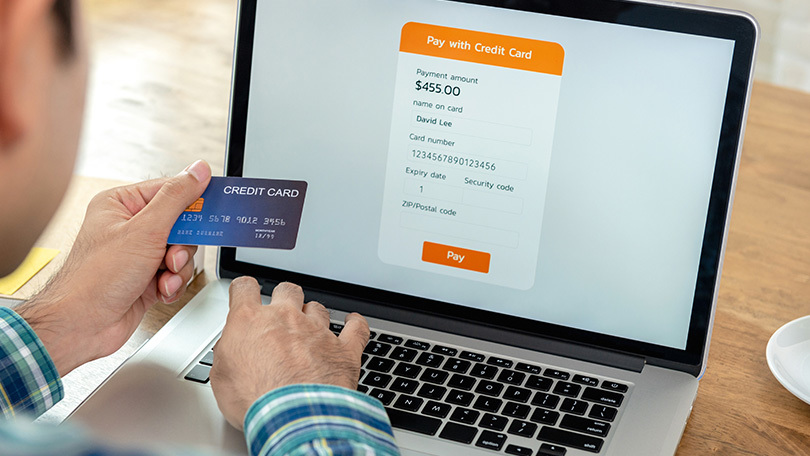
Do I need to be PCI compliant? If you’re a website owner, you’ve probably asked yourself this question, right? Well, it’s time to clear the air once and for good. In this short yet comprehensive guide, we’ll enlighten you on what PCI is, why it’s essential, and how to make your site PCI compliant (should it be necessary).
What is PCI Compliance?

PCI DSS is an acronym for the Payment Credit Industry Data Security Standard. The information security framework was created with the sole aim of protecting credit card holders against data breaches. If your organization or enterprise accepts credit card payments or handles critical card data, it’s mandated to comply with PCI DSS.
There are four levels of compliance that every organization or enterprise falls under, depending on the number of transactions they process annually. They’re as follows:
- Level 1: Above 6 million
- Level 2: 1 to 6 million
- Level 3: 20,000 to 1 million
- Level 4: Below 20,000
How Much Does it Cost to Become PCI Compliant?
The cost for PCI compliance varies depending on factors like business type, security culture, size, and payment card processing procedures. But overall, you can expect to pay an annual fee of between $1,000 to $50,000.
You may be thinking: isn’t that a little costlier for mere compliance? Frankly, that’s fair pricing because non-compliance could be heftier than you can imagine. We’re talking about exorbitant fines, exposure to data breaches, the cost of compensating affected customers, etc.
Why is PCI Compliance Critical?

You want to obtain PCI compliance for your business or organization due to the following reasons:
- Online shopping is booming today. Imagine missing out on a huge chunk of sales and potential revenue for your online store because you don’t accept credit card payments.
- Prevention of security breaches. As more and more people embrace online shopping, cyber threat actors find an easy avenue to stage their malicious attacks.
- Protection against harsh penalties. Non-compliance attracts harsh penalties and fines that you can effortlessly avoid by paying a small annual service fee.
How Do You Make Your Site PCI Compliant?

Below are some easy-to-implement steps that will make you PCI compliant in no time:
Step #1: Implement and Maintain a Firewall Configuration Program
The first step is all about securing your local network. For starters, you want to list all your servers, their purpose, who can access them, what’s externally accessible, and the services they run. You then want to leverage tools like WP engine to provide first-class security, including virus and malware scanning behind a restricted firewall.
Step #2: DO NOT Use Vendor-Supplied Defaults
Using system passwords and other security parameters in a default state exposes your site to malicious attacks. Instead, you want to change the passwords to more secure options and disable all default accounts before installing the system into your network. Further, if you must share the login credentials with the hosting providers, confirm that they protect each entity’s cardholder data and the entire hosted environment. The same applies to sharing the password within the organization.
Step #3: Protect Cardholder Data
Perhaps the most critical action you can take to protect cardholder data is enacting strong policies on proper security practices that employees and colleagues must follow. Beyond that, don’t store any cardholder data because you may become more susceptible to theft. But if you must, ensure you encrypt the data, store it only for as long as you need it, then delete it securely.
Step #4: Encrypt Cardholder Data Transmission
Here, the idea is to add an extra layer of security to the cardholder data by allowing only the source with the right password to un-encrypt secure data.
Step #5: Use the Most Updated Antivirus Software
This step is all about deploying antivirus software on systems, especially those that are more vulnerable to malicious attacks, e.g., personal servers and computers. But that’s not all; you also want to ensure that the antivirus software is optimized and actively running throughout.
Step #6: Up-to-date Tracking and Monitoring
You want to keep track of all access to cardholder data and network resources to watch out for any abnormalities. Finding out the who, when, and why is critical in optimizing security.
Step #7: Collaborate with PCI-Approved Online Payment Platforms
There are several online payment platforms that you can collaborate with to facilitate safe and secure paperless transactions for your e-commerce website. Some of the popular options include Stripe, PayPal, Google Pay, and Visa Checkout.
Step #8: Watch Out for Vulnerability
Be sure to leave no stone unturned even as you implement these steps. You can leverage a reliable scanner to check for any data security weak links.
Wrap Up
As an e-commerce or online store owner, one of your core responsibilities is to make your customers’ shopping experience as seamless and memorable as possible. True, this may not contribute to the bottom line directly. But does that mean it isn’t worth it? Think about the potential negative reputation, lawsuits, revenue loss, hefty fines, etc., that you may incur if a security risk occurs due to compromising customers’ credit card data.
You can avoid all these potential mishaps and financial distress by making your site PCI compliant. Reach out to us today, and we’ll be more than happy to help.




